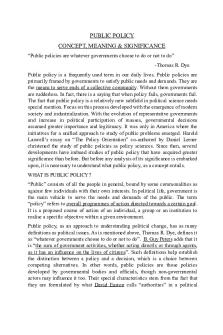Daemonology significance question PDF

| Title | Daemonology significance question |
|---|---|
| Course | Witchcraft |
| Institution | Sixth Form (UK) |
| Pages | 2 |
| File Size | 34.8 KB |
| File Type | |
| Total Downloads | 18 |
| Total Views | 148 |
Summary
Question on the importance of daemonologie on witchhunts...
Description
The source is somewhat useful in an enquiry into the belief of witchcraft as it is written by James VI meaning that it was followed by many members of the social elite, however opposition and peasantry in Scotland may not have believed the same things. However, the source is very helpful in an enquiry into the nature of the punishment of witchcraft as James was the primary law maker in Scotland and had very little opposition when making laws.
The source is somewhat useful in an enquiry into the belief of witchcraft in Scotland. James writes that ‘such assaults of Satan are certainly practiced.’ proving that he believed in witchcraft completely. As James was the most elite of the social elite, many of the lesser elites are highly likely to have believed James’ belief too in order to remain in favour with the King. Despite this, some members of the elite, such as Reginald Scot, did not believe in witchcraft. In his book ‘The discoverie of Witchcraft’ Scot attempt to disprove witchcraft, however as most of the country were illiterate and James wrote Daemonology to counter his views his book was widely ignored. Furthermore, James goes on to explain how ‘there are 20 women given to witchcraft compared to 1 man,’ showing that he believed women were more likely to become a witch than men. While this was fairly accurate as the vast majority of witches were female, there was still a fair amount of males accused of witchcraft. One of these was the Earl of Bothwell who James personally accused of attempting to murder the King through sorcery. Therefore, the source shows how many members of the social elite felt about witchcraft, but neglects the beliefs of opposition to the King and the peasantry in Scotland, making the source only somewhat useful in an enquiry into the belief of witchcraft in Scotland.
The source, however, is very useful in an enquiry into the nature of punishments given to witches in Scotland. When James writes ‘They ought to be put to death according to the law of God,’ James references his divine right, that he was appointed to rule by God. This meant that any decision that James gave was believed to be directly given by God, making opposition almost impossible. Therefore, every punishment that James mentions in the text is likely to have been used as James was the only law maker in Scotland. Furthermore, James writes that evidence of witchcraft includes ‘the finding of their mark and the insensitivity of this mark.’ This increases the accuracy of the source as it is commonly known that witches were often stripped down and searched for a witches mark as part of their interrogation. This was often enough for a witch to be found guilty of witchcraft. Despite this, some accused witches with no mark were still found guilty of witchcraft, proving that the witches mark was not the only factor used to prove witchcraft as James suggested in his text. Despite this, the source is very useful in an enquiry into the nature of punishments given to witches in Scotland as James was the unopposed lawmaker so what he believed was directly implemented into law.
The source is somewhat useful in an enquiry into the belief of witchcraft in Scotland because, despite neglecting opposition and the belief of peasants, it highlighted the main
beliefs of the social elite. The source is very useful in an enquiry into the nature of punishments for witchcraft in Scotland as the unopposed law maker wrote the text causing the punishments commonly used to be explained in great detail, giving great utility for the enquiry....
Similar Free PDFs

Design-Utility and Significance
- 13 Pages

Baker v. Carr Significance
- 4 Pages

Significance Of Research
- 1 Pages

Significance of the Study-Sample
- 2 Pages

The Significance of Xiao Qing
- 15 Pages

Question
- 6 Pages

Question
- 2 Pages

Dmdw-question bank - question bank
- 17 Pages

Question 2 question and Answer
- 8 Pages
Popular Institutions
- Tinajero National High School - Annex
- Politeknik Caltex Riau
- Yokohama City University
- SGT University
- University of Al-Qadisiyah
- Divine Word College of Vigan
- Techniek College Rotterdam
- Universidade de Santiago
- Universiti Teknologi MARA Cawangan Johor Kampus Pasir Gudang
- Poltekkes Kemenkes Yogyakarta
- Baguio City National High School
- Colegio san marcos
- preparatoria uno
- Centro de Bachillerato Tecnológico Industrial y de Servicios No. 107
- Dalian Maritime University
- Quang Trung Secondary School
- Colegio Tecnológico en Informática
- Corporación Regional de Educación Superior
- Grupo CEDVA
- Dar Al Uloom University
- Centro de Estudios Preuniversitarios de la Universidad Nacional de Ingeniería
- 上智大学
- Aakash International School, Nuna Majara
- San Felipe Neri Catholic School
- Kang Chiao International School - New Taipei City
- Misamis Occidental National High School
- Institución Educativa Escuela Normal Juan Ladrilleros
- Kolehiyo ng Pantukan
- Batanes State College
- Instituto Continental
- Sekolah Menengah Kejuruan Kesehatan Kaltara (Tarakan)
- Colegio de La Inmaculada Concepcion - Cebu






